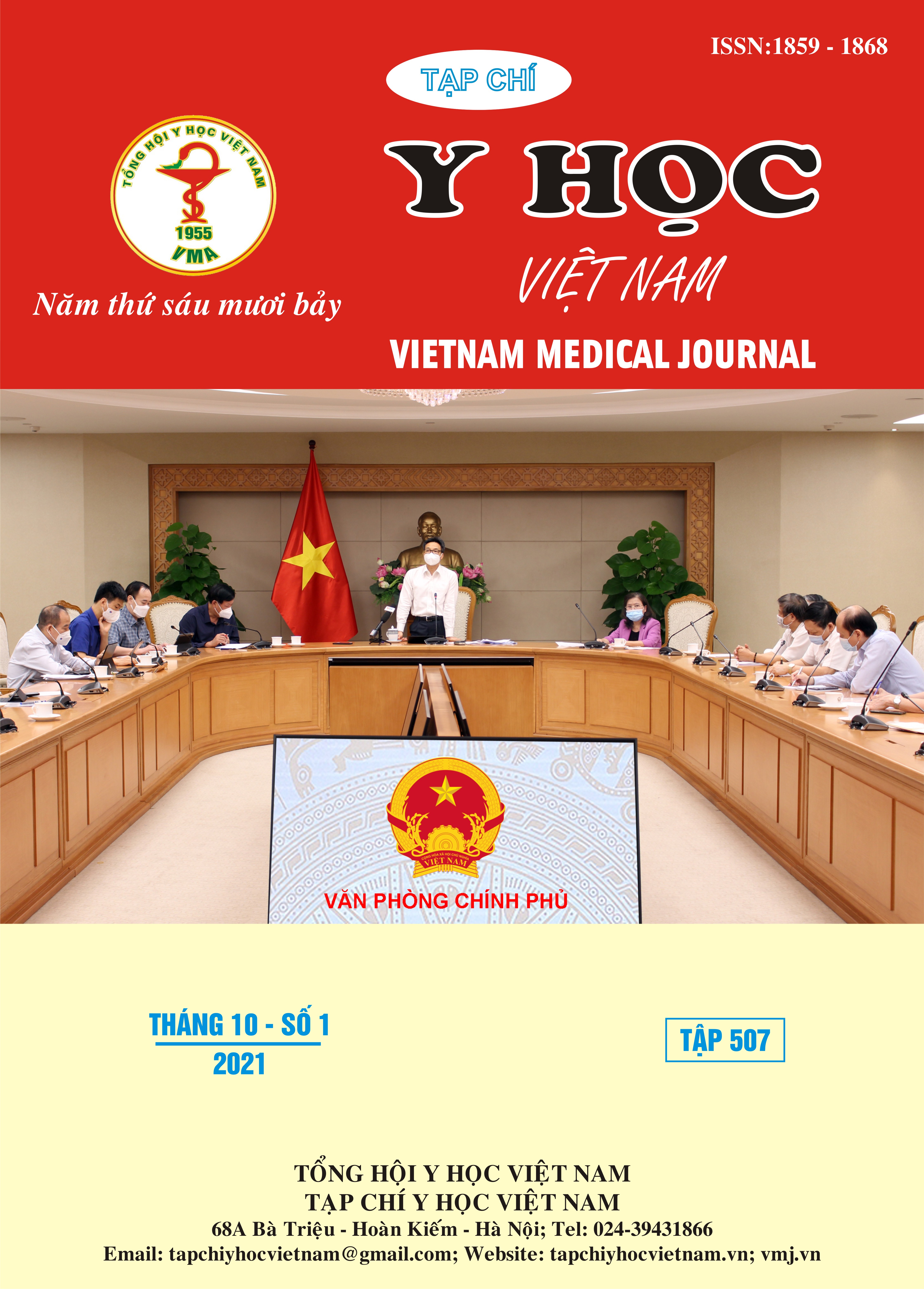COMPARED SHORT-TERM RESULTS OF BALLOON ANGIOPLASTY AND STENT PLACEMENT THERAPY FOR TASC II A, B LESIONS OF ILIAC ARTERIAL OCCLUSIONS
Main Article Content
Abstract
Objective: To compare the results of balloon angioplasty and stent placement therapy for TASC II A, B lesions of iliac arterial occlusions. Methods: Retrospective descriptive series of cases. Results: The study had 137 patients, male accounted for 84.7%, average age 70.4 ± 10.9 study samples. TASC II A class accounted for 48.9% (67 cases), TASC II B class accounted for 51.1% (70 cases). The balloon angioplasty group had a lower percentage of TASC II B than the stent placement group (28.6% vs 63.6%, p<0.001). The mean intervention time of the balloon angioplasty and stent placement group accounted for 157 ± 39.7 minutes and 147 ± 56.4 minutes, respectively. The mean hospital stay of the balloon angioplasty and stent placement group was 4.4 ± 1.7 days and 4.8 ± 3.1 days, respectively. General complications accounted for 4.4% of the sample, of which embolism 0.73%, myocardial infarction 0.73%, amputation 1.5%, hematoma 0.73%, renal failure 0.73 of the sample. Technically successful results are 100% for both methods. The short-term clinical success of balloon angioplasty and stenting accounted for 97.9% and 96.7%, respectively, the difference was not statistically significant (p=0.67). Conclusions: Angioplasty and stenting in the treatment of iliac artery occlusion with TASC II A, B lesions are minimally invasive, safe, effective, short hospital stay, and fast recovery. Both methods improve clinical and subclinical symptoms after the intervention, with few complications. The short-term clinical success between PTA and stent placement was not statistically significant.
Article Details
Keywords
Angioplasty, stent placement, iliac arterial occlusions, TASC II A, B
References
2. Goode SD, Cleveland TJ, Gaines (2013). “Randomized clinical trial of stents versus angioplasty for the treatment of iliac artery occlusions (STAG trial)”. British Journal of Surgery; 100(9): pp.1148–53.
3. Kudo T, Chandra FA, Ahn SS (2005) “Long-term outcomes and predictors of iliac angioplasty with selective stenting”, J Vasc Surg, 42(3): pp.466-75.
4. Taylor M Spence, John W. York (2010), "Lower Extremity Arterial Disease: Decision Making and Medical Treatment", Rutherford's Vascular Surgery, 7 ed., 2, Chap 104, pp.1593 - 1612.
5. Timaran, et al (2001), “External iliac and common iliac artery angioplasty and stenting in men and women“, J Vasc Surg; Vol 34(3), pp.440-446.
6. Van Haren R.M., et al (2017), “Endovascular treatment of TransAtlantic Inter- Society Consensus D aortoiliac occlusive disease using unibody bifur- cated endografts”, J Vasc Surg, 65(2): p. 398-405.
7. Rutherford RB, Baker JD, Ernst C, Johnston KW, Porter JM, Ahn S, Jones DN (1997), “Recommended standards for reports dealing with lower extremity ischemia: revised version”. J Vasc Surg, 26, pp.517-538.
8. Pulli R, Dorigo W, Fargion A, Innocenti AA, Pratesi G, Marek J, Pratesi C (2011), "Early and long-term comparison of endovascular treatment of iliac artery occlusions and stenosis". J Vasc Surg, 53(1), pp.92-98.


